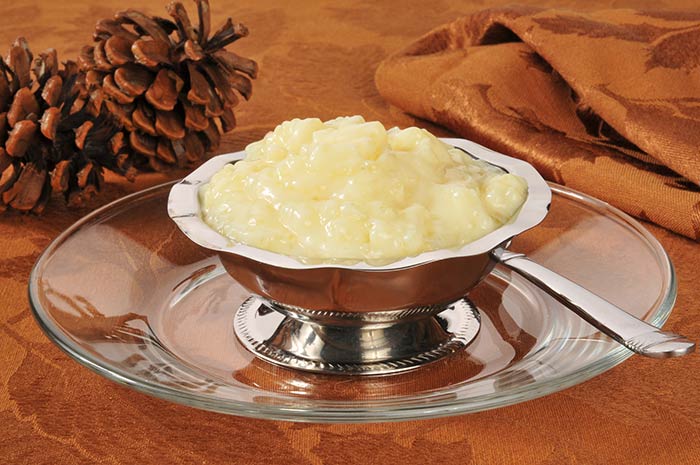Tapioca and rice pudding are two age-old desserts that never seem to disappear completely from the culinary scene, though the popularity of the former has waned in recent years. Even in their simplest forms, these two concoctions are comforting treats that often evoke nostalgia. Theyre also some of the easiest recipes to create, making them great choices for when youre in the mood for the sweet stuff, but dont want to spend hours in the kitchen.
On the surface they may seem very similar, but what distinguishes tapioca from rice pudding and vice versa? Which one might be more suitable for the confectionary ideas you have in mind? If youre looking for the scoop on this pair of comparable creations, weve got you covered when it comes to the differences in taste and texture, and how you can elevate your desserts beyond their seemingly simple exterior. Whether learning about one or both for the first time or looking for some scintillating new tidbits, grab a spoon and dig into the facts about a pudding duo that never fails to sweeten a table.

Rice pudding can take on a variety of flavors
In its barest interpretation, rice pudding is flavored with vanilla and usually cinnamon, sometimes with nutmeg added for a bit of complexity. But in its dreamiest forms, rice pudding can conform to practically unlimited add-ins to transform it into a much richer dish. Combinations such as rum and raisin topped with malted whip and hazelnuts, orange and cinnamon, and even chocolate can send simple rice pudding from the launch pad soaring into the dessert stratosphere. Even a dollop of jam, sliced fruit, or a drizzle of maple syrup can bring out a whole different side of this adaptable creation, allowing you to add your signature spin to the comforting classic.
Crafty cooks will see a traditional rice pudding recipe as the starting point for something more customizable. As an ingredient, rice is a blank canvas that invites exploration. When sugar, butter, and milk are added, the richness expands and makes space for almost any dessert flavor invention you can come up with. Think of rice pudding as a warm version of ice cream, something thats nice enough on its own, but easily transformed into a more special experience with a few well-chosen add-ins.
Tapioca pudding has been much maligned through the decades
Tapioca pudding hasnt had an easy run as desserts go. For many, it was a runny replacement for better food, a dish that reminded diners of fish or frog eyes suspended in runny goo. Quality is a factor in whether youre likely to enjoy tapioca, as are the conditions under which you first encountered it — put it this way, if you ate a lukewarm bowl of it in a school cafeteria, youre unlikely to have pleasant memories of it. Along with rice pudding and semolina, tapioca was a staple of schools in England from the 1960s to the 1990s. Even into the 21st century, tapioca pudding has been voted as a sub-par dessert, seen as a terrible memory from school days long past that created an indelible impression.
Though once popular as a form of Jell-O pudding, tapioca pudding has had difficulty making any kind of comeback, let alone finding a permanent place in a modern diet. Its more likely to be viewed as food for the older generations or babies, due in part to its soft texture and easy digestibility making it an easy food for older and younger eaters to consume. Even a current search for gourmet versions of tapioca pudding returns the same basic recipe and shopping links to packages youre likely to find in your grandparents fridge, seemingly confirming tapioca has fallen out of favor.
Easy Vegan Rice Pudding Recipe
What is the difference between tapioca and rice pudding?
Tapioca pearls are chewy and translucent when cooked, while rice pudding has a creamy texture and a mild flavor. Regarding nutritional value, tapioca, and rice pudding are high in carbohydrates and calories, but tapioca pudding is typically lower in fat than rice pudding.
Is tapioca rice gluten free?
Tapioca flour is a naturally gluten-free substance, as it is made from the cassava plant’s extracted starch. It is sweet and very starchy. It can be combined with other gluten-free flours like brown rice or quinoa flour. However, it is important to know, that many gluten-containing foods are also made with tapioca, making it very important that you carefully choose your tapioca products. Being able to recognize which tapioca products are gluten-free and safe for consumption starts with understanding gluten-free labeling and certification.
Can you eat tapioca pudding instead of rice pudding?
You could choose to eat tapioca pudding instead of rice pudding as an even lower-calorie choice. In ½ cup of a standard, commercial tapioca pudding containing skim milk, sugar, tapioca, preservatives and flavorings, you get 131 calories, 2 grams of protein and 4 grams of fat, just 1 gram of which is saturated.
Is tapioca pudding a vanilla pudding?
Tapioca pudding is not a vanilla pudding. The major difference is that tapioca, the base ingredient, has no taste and smells granular. Even if tapioca and rice pudding are vastly different from each other, doesn’t mean you have to just choose one if both sound delicious.
